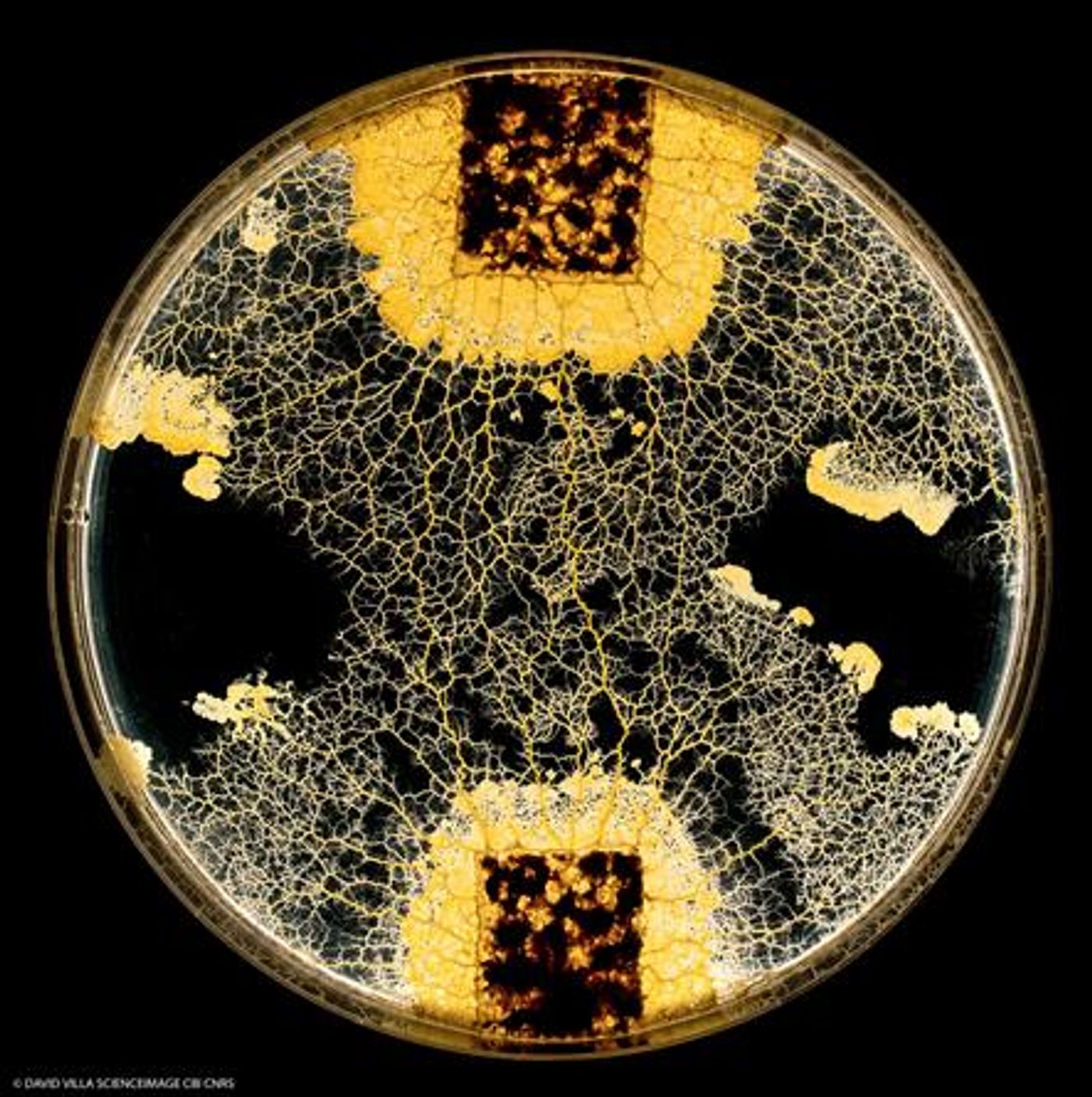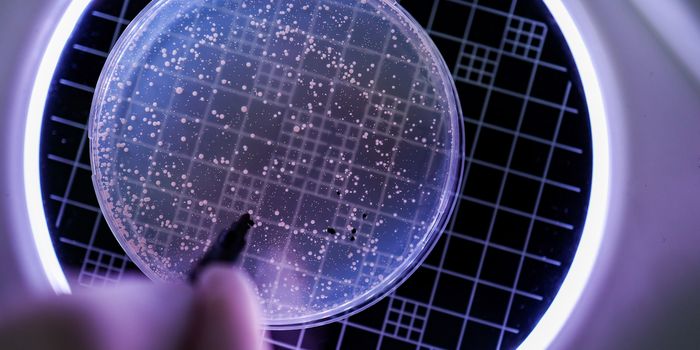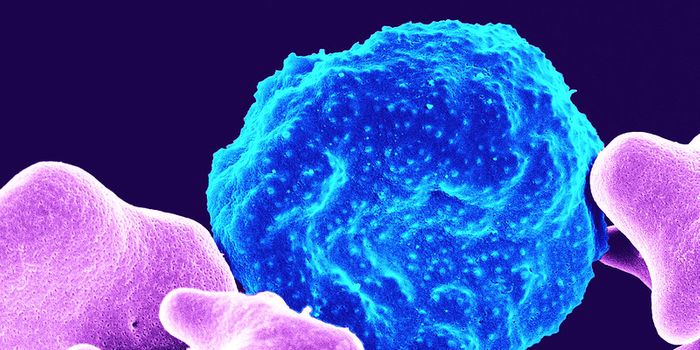A Single-Celled Organism That Can Learn
Physarum polycephalum is an unusual single-celled organism that can grow to be several square feet in size. These massive cells can live in cool, damp areas in temperate forests, and are able to stretch out with slimy tendrils to search for prey, which includes bacteria, fungi, and decaying organic matter. Researchers have found that Physarum has an astonishing set of capabilities that were once thought to be unique to organisms with nervous systems. These molds are able to solve complex mazes, make decisions that involve trade-offs, maintain a memory of places it's been, and even create transportation networks.
Scientists have also found that one slime mold cell can share its knowledge with other slime mold cells when the venous networks within them fuse. Slime molds are also able to build a tolerance to a substance by absorbing it.
When investigators at The Centre de Recherche sur la Cognition Animale (part of the Centre de Biologie Intégrative (CNRS)) exposed slime molds to salty environments for several days, they found that the concentration of salt inside the slime mold cells was significantly raised. After these same 'salty' slime mold cells were put into an environment that was neutral, the salt left the cells, and their 'memory' of the salty environment was lost; they were no longer habituated to it. The 'memory' of the salty environment could also be transferred into slime mold cells that had never been exposed to salt. When a salt solution was injected into 'naive' mold cells, they behaved like those that had been exposed to salt for six days.
These molds are able to roughly solve what's known as the traveling salesman problem (TSP), which is to find the shortest way to visit each of a set of cities only once and then return to the start.
Scientists at Hokkaido University and Amoeba Energy in Japan mimicked the dynamics of the slime mold electronically using an analog circuit. "The amoeba core searches for a solution under the electronic environment where resistance values at intersections of crossbars represent constraints and requests of the TSP," said Professor Seiya Kasai at Hokkaido University.
"As the analog computer consists of a simple and compact circuit, it can tackle many real-world problems in which inputs, constraints, and requests dynamically change and can be embedded into IoT devices as a power-saving microchip," explained Masashi Aono of Amoeba Energy.
Sources: AAAS/Eurekalert! via Hokkaido University, CNRS, Scientific Reports, Philosophical Transactions of the Royal Society B









